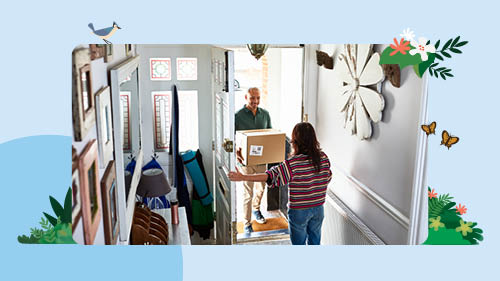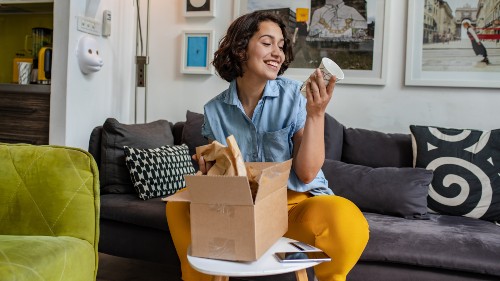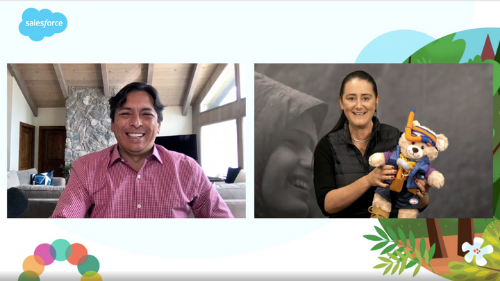The future of retail is digital: Consumer behavioural change



Physical store closures and a population staying at home threw incredible momentum behind retail’s digital evolution.
Salesforce Staff
Physical store closures and a population staying at home threw incredible momentum behind retail’s digital evolution. And consumer research shows that the digital revenue growth we saw in April — an astounding 262% in Australia and New Zealand — is not likely to be a flash in the pan.
James Johnson, Salesforce’s Director Industry Strategy for Retail, says it’s imperative that retailers experiment and test strategies online to ensure their businesses have a long-term future.
The pace of digital revenue growth, though unexpected six months ago, will come as no surprise. Those retailers that have long pondered over moving into a digital marketplace have been left with little alternative; likewise consumers who’ve resisted the temptation to shop online.
The vast majority of changes we’ve seen to our retail landscape over recent months were, however, always on the horizon. COVID-19 has simply accelerated the rate of change. The changes in consumer behaviour and retailers’ capabilities that may have taken five or 10 years are here now.
Habits formed and retailers evolved
What our post-COVID world will look like no-one truly knows, however it’s certain that some things will change – particularly things that, over time, would likely have changed anyway.
We’ve seen many retailers building exciting experiences online, and no doubt some of their innovations will remain, evolve and form part of their overall strategy moving forward.
Consumer behaviour will also be affected long-term. Across the globe, significant numbers of shoppers have been forced online to purchase items they’d usually pick up in person. Salesforce Research is currently surveying the general population each fortnight, and the latest data shows that Australians are avidly adopting new means of shopping.
Almost one in five Australian shoppers used to buy online, pick up instore (BOPIS) / click and collect more than usual in the first two weeks of May, 16% increased their use of automated retail stores, and 13% made more purchases over social media.
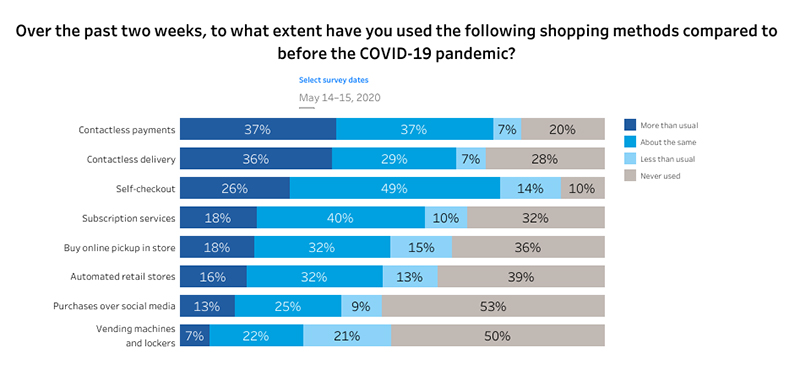
As consumers become more accustomed to purchasing online — or using online services such as click and collect — digital commerce will become an increasingly important part of the retail revenue mix. Habits will be formed, businesses evolved and our retail landscape forever changed.
Accelerating out of crisis by embracing digital retail change
Businesses are navigating through three stages of uncertainty: stabilise, normalise and accelerate – and the digital maturity of individual businesses at the time COVID hit will have affected how quickly they move through each.
Retailers that hadn’t evolved their online presence have struggled to be agile enough to adapt, and face an urgent situation in which they need to build their online presence now, or risk being left behind by both the market and the expectation of their customers.
Many with well-established digital arms were quickly able to normalise operations and are now in the accelerate phase, during which they’re learning and evolving processes, implementing permanent changes and making use of a virtual workforce.
This doesn’t mean that bricks and mortar stores will all remain permanently closed, of course. But these retailers have diversified income streams, fast-tracked many digital operations, and learned and evolved their offerings.
There is good news for those businesses that hadn’t focused on digital commerce before and are still in the stabilise or normalise phase: there’s still time to adapt and get on a path to future success — if they act quickly.
Of course, launching a whole new ecommerce business can be a daunting task, especially for the digitally inexperienced – it’s smart to take a pragmatic approach, be clear about where responsibility lies, and have a mindset of learning and adapting.
The ‘next normal’ consumer will make the future of retail
Many retailers have relied heavily on physical interactions – it’s only now that we might say ‘too heavily’ with the benefit of hindsight.
Some have been in operation since pre-internet days. Some differentiate based on the personalised customer service they can deliver in-person. There are aspects of physical retail that cannot be replicated online – whether the face-to-face interaction and the ability to ‘discover’ products, or to touch, feel, smell them.
None of this can any longer be relied upon as a differentiator.
The reality is that digital commerce opens the doors to an exponentially increased number of prospective customers, and keeps a physical store open 24/7.
Critically, however, ecommerce is a growing part of the retail mix, and the focus is shifting thanks to the online experiences retailers have been delivering to customers, and the efficiencies those businesses have been able to establish.
There’s evidence to believe that the shift to online shopping will outlast the pandemic, and that it will include purchases long associated with a quick trip to the grocery store or outlet.
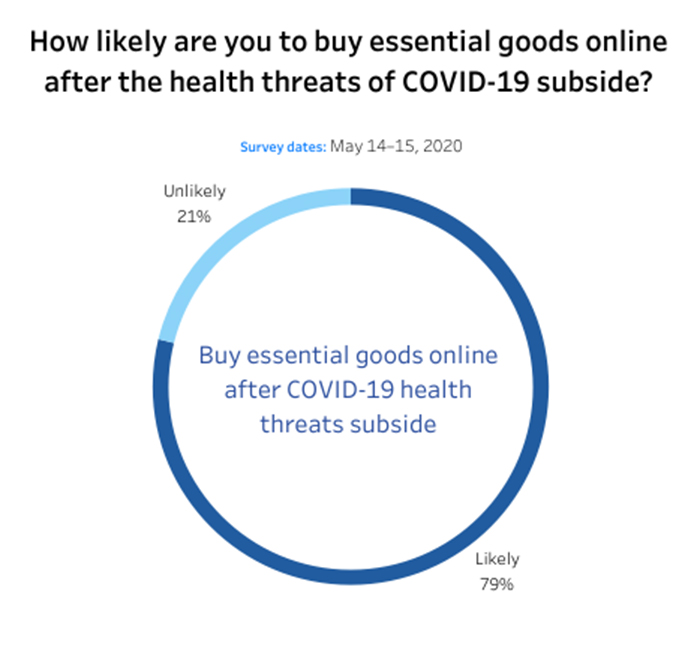
Almost two-thirds (60%) of Australian shoppers expect to buy essential goods online after the health threats of COVID-19 have subsided. Millennials and Gen Z consumers are most likely to drive this lasting trend, with 79% in Australia saying they are likely to continue shopping for essentials online after the threat passes. However, 26% of Aussie baby boomers also foresee purchasing staples from a desk, dining room table or couch.
The proportions of physical retail, digital commerce and other channels of course will differ for each business, but ultimately succeeding in retail when consumers are looking to spend in digital channels is about providing them as many options as possible to engage and shop on their terms.
Register for our virtual Salesforce Live for Retail and Consumer Goods on July 15 to learn from our local Trailblazers and guest speaker Brian Solis where we’ll explore trends in digital transformation, customer experience, and the future of industries.
Help your team accelerate into the future of digital commerce. Download the sixth annual State of Marketing report to find out more.
James Johnson is Director Industry Strategy for Retail at Salesforce.
